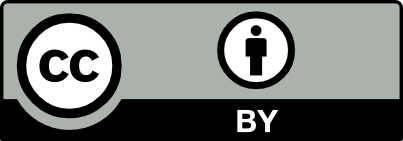Preparing the Soil: Getting Started with OER for Social Justice
Remixing Openly Licensed Materials
Karna Younger
Learning Objectives
By the end of this chapter, you will be able to
- Evaluate open licenses for remixing
- Select an open license for your OER
Key Compilation Ingredients: Openly Licensed Content
Let’s return to the kitchen analogy to discuss adding openly licensed materials to your OER compilation. Because of the restrictions of copyrighted materials, your OER primarily will consist of content that are licensed for you to engage in Wiley’s 5 Rs of OER. That is, to retain, reuse, remix, revise, and redistribute content.
Identifying CC Works by Attribution
In your academic work, you are accustomed to citing works following a disciplinary style guide, such as The Chicago Manuel of Style, the MLA (Modern Language Association) Handbook, or the Publication Manuel of the American Psychological Association. In your OER work, you are encouraged to continue this practice and your choice of citation style, remembering that Pressbooks also has a function for footnotes and endnotes.

The open community has its own citation practices as well. You can identify works openly licensed under Creative Commons (CC) by the attribution statement and/or a CC badge.
Before we dive into all the required elements of an attribution statement, let’s focus on being able to identify an open license attribution. Flip through the below tutorial to see common examples of how and where open license statements are attributed.
How to Write an Attribution Statement
The CC organization developed a standardized method for attribution to ensure openly licensed works were properly attributed. Such as the image here, CC licensed content may have a written language, it may have a CC badge or both. Whichever format you choose to display an attribution, Creative Commons prefers you follow the Title, Author, Source, and License (TASL) attribution format.
How to Format TASL Attributions
Show/Hide
TASL Example
For additional guidance, review “Recommended Practices for Attribution,” part of the extensive CC Wiki.
Remixing CC Licensed Content
When remixing works with CC licenses to create your new OER, you need to consider the compatibility of the CC licenses of the original OER. Don’t worry about license compatibility if you are simply quoting from a work. But when you are combining two or more OER, review the below chart to determine if the two licenses are compatible, or can be mixed into a smoothie.
License Compatibility Chart
Show/Hide

Tips for Remixing CC Licensed Works
Where to place a TASL Attribution Statement
It will feel a bit odd to remix existing work because copyrighted works generally prohibit such practices. But in open education it is common to remix a work and list yourself as the author of a Pressbook chapter, for instance. You do need to include an attribution statement to properly attribute your sources and licensing information following the TASL format. Depending on how you have remixed sources, you may put this statement in such locations as the front matter of your OER, the end of a chapter, near an object, or a combination of places.
Recap: Licensing Compilations and Remixes
That was a lot of information, so let’s recap the different approaches to the differences in licensing when creating a compilation or remixing openly licensed content. Nate Angell from Creative Commons uses the useful analogy of a compilation as a tv dinner with distinct portions and a remix as a blended smoothie of indistinguishable parts. Watch Andrew Cambron’s quick, visual take on Angell’s explanation below.
Your Turn: Practice Remixing Licensed and Copyrighted Materials
Resources
“Attribution Style Guide” by Michaela Willi Hooper for Open Oregon Educational Resources is
licensed under CC BY 4.0.
